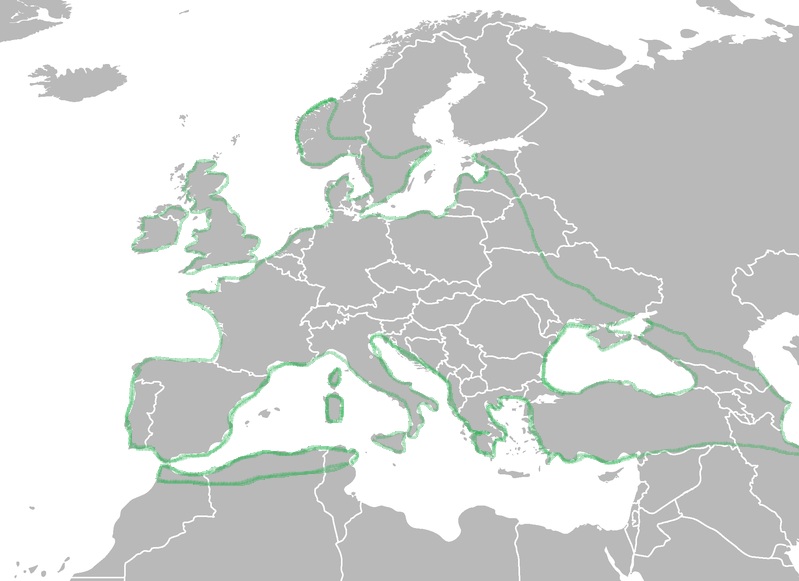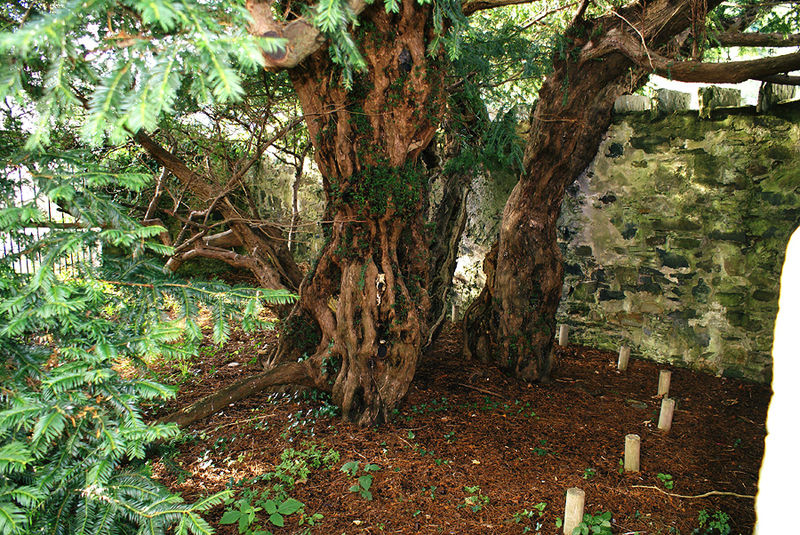Habitat
The European yew is primarily located in... you guessed it, Europe! Although this tree was a dominant or co dominant tree for almost all of Europe before mankind, today it has a very sparse distribution throughout this region. Common dominant trees in this region now may include the oak or beech trees I made the map below to give you a general visual example of where the English yew is located (enclosed in green).
Again, this map is not close to being 100% accurate but gives you a general idea of where English yews can be found. As you can see, the natural habitat covers most of Europe, some of northern Africa, the southern tip of Scandinavia, and extends through Asia Minor to the border of Iran. These areas are ones typically with climates suitable for forest formation (Mediterranean forest, Temperate forest, Deciduous forest, etc.). These forested areas usually have a moderate cold winter and hot summers. As you can see by my map, the very dry region to the south in Africa and the Middle East present one natural barrier, as well as the cold Continental climate of eastern Europe.
In this natural habitat, the English yew's typically grow to an average height of 30 feet. The largest yews can sometimes attain a height of 90 feet or a girth greater than 20 feet. The slow growing English yews are also some of the longest living trees in the world. This tree has several interest interactions with other organisms within its niche. See Interactions for more details.
A Shrinking Habitat:
Due to a changing climate the English yew natural habitat is steadily shrinking. However, the greatest threat to the number of English yew has been harvesting. From the making of weapons thousands of years ago to the production of cancer drugs today, the English yew has proven to be too useful for its own good. In fact, harvesting of yew wood to make longbows in England have caused the yew to be almost non existent in that region. Likewise, the English yew is very sparse in Greece, where it was used for weapons of Alexander the Great's armies. To read more about this, see Uses.
As a result of this shrinking habitat, many forests with dense populations of mature trees are set aside as yew reservations. In Great Britain, the English yews can often be found only in churchyards and graveyards. Trees such as this have been protected from being harvested and are some of the oldest trees in the world.
Named the Fortingall yew, this English yew is one such churchyard yew which is quite famous. It is estimated this tree is 2000-5000 years old, making it one of the oldest trees in the world. There are several other very old and famous yews scattered throughout Europe. It is hard to tell exactly how old the trees are, because the heart of the tree dies as the tree grows (see picture above).
If you're really into "English" plants, check out English Ivy!

